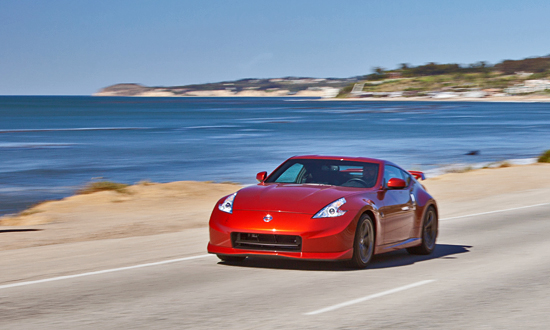
Remember when driving on PCH felt like this? Take a good look. Roadwork is on the way.
Pacific Coast Highway may be famed for its scenic vistas, but for locals, the real talk of the town is its construction zones.
“It’s a running joke here,” says 14-year resident P.J. Manney. “As soon as the tourists arrive, Caltrans shows up. This year, though, we’re actually a little freaked out.”
That’s because, beginning next week, traffic in Malibu and Santa Monica is expected to become extra congested for locals, commuters and sightseers, thanks to two long-term and several shorter-term public works projects along PCH.
The upshot? An already frustrating—and occasionally dangerous—stretch of one of America’s most storied highways is about to acquire even more roadblocks.
“The reasons are all positive, but getting there is going to be a real inconvenience,” sighs Elizabeth Anthony, who is bracing for a long, gridlocked summer near her home on Point Dume.
“I can’t say we shouldn’t have these projects, but for those who live out here, they’re a real concern.”
The roadwork arises from a variety of safety and environmental issues, and is being coordinated by the various jurisdictions. Among other measures to minimize the pain, officials plan to use “dynamic lanes” to ease traffic backups, creating more southbound lanes on PCH during morning rush hour, for instance, and more northbound lanes in the evening rush when commuters are heading home.
Still, locals say, PCH will be a slog. Among the projects:
- The second phase of the $9 million Coastal Interceptor Relief Sewer. This will shut down a 900-foot southbound stretch of PCH to expand sewer capacity between Chautauqua Boulevard and the Annenberg Community Beach House. Expected to start April 15, the year-long City of Los Angeles project will improve the capture of urban runoff that now runs directly into the ocean. The upgrade, financed by a bond measure, is necessary to meet federal water quality standards. Work will occur every day except on Sundays.
- A City of Santa Monica repair and repaving project around the California Incline, the slanted street that connects Ocean Avenue along the Santa Monica bluffs to PCH down below. Work will start in early September and is expected to continue at least through 2015.
- An assortment of safety-related City of Malibu projects, some of which have already begun. A particularly hazardous intersection at PCH and Big Rock Drive, for instance, will finally get a long-awaited left-turn signal, and a nearly 25-year-old “arrestor ramp” for runaway trucks is being improved at the Kanan Dume Road intersection with the coast.
Besides these big-ticket projects, “we’re also putting in a new, lit crosswalk at La Costa and doing a bike lane project from Busch Drive north to the northern city limits along PCH,” says Malibu Councilwoman Laura Zahn Rosenthal. Several bus stops also are being upgraded and traffic messaging will be improved.
Work is expected to be finished before summer, Rosenthal says, adding that the inconvenience ultimately will be worth it.
“That turning lane at Big Rock will make a big difference to the 240 homes up there,” she says. “We have bus stops right now that peoples’ legs actually hang over onto PCH if they sit on the bus bench. And we’ve been trying for a long time to make the Zuma Beach area safer.”
Cyclists say they are especially grateful for the Zuma Beach project, which will make it easier for bike traffic to get past the parked cars that often line the shoulder of the road on the beach side of the highway.
“There’s an area there that’s covered in ice plant and people park unevenly around it,” says Eric Bruins, planning and policy director of the Los Angeles County Bicycle Coalition. “So you’ll be going along and there’ll be five cars parked evenly along the shoreline and then one that’s haphazard. There are a lot of near misses that easily could become tragic if they aren’t fixed.”
In the meantime, however, Bruins says, his constituency, too, is bracing for even more PCH difficulties than usual.
“It’s already not for the faint of heart,” he says, noting that most motorists believe—incorrectly—that bicyclists are required to keep to the shoulder. Bruins says that, on PCH, that shoulder waxes and wanes, in part because of natural landslides and coastal erosion, so bicyclists frequently find themselves forced to merge with other traffic, which can be lethal.
Locals, meanwhile, say they’ll simply try to go with the slow-flow, though some predict their Westside coping skills will be challenged.
“Some of my friends are hunkering down in Malibu and will be working at home,” says Manney. “My husband’s offices are in Beverly Hills and Orange County, though.”
The family’s solution? “He’s going to start renting hotel rooms.”
Posted 4/10/14






